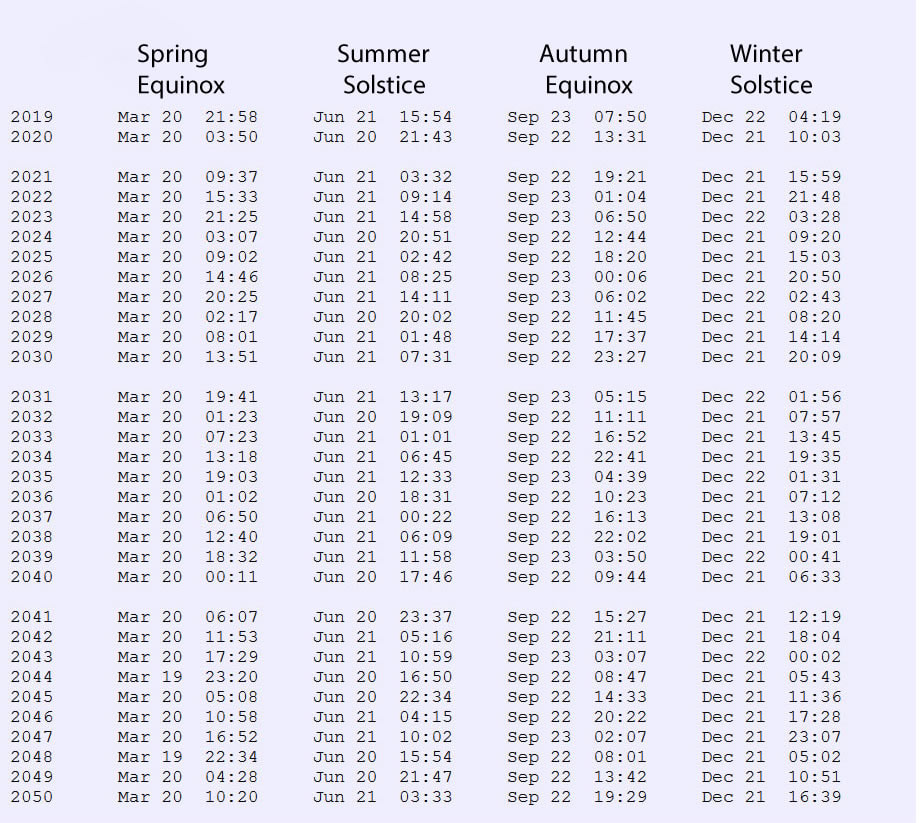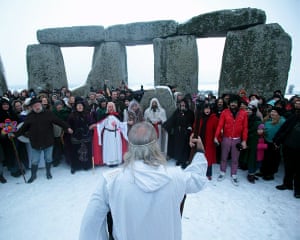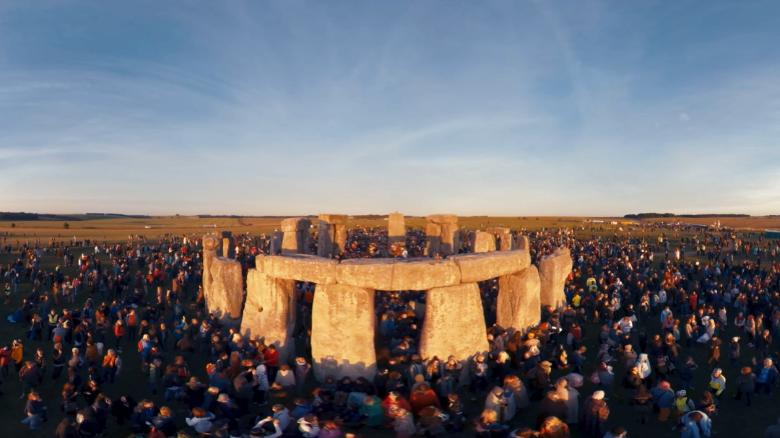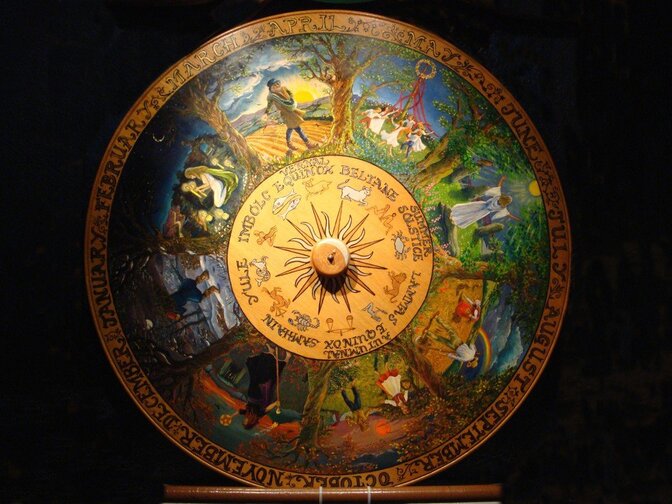Solstice Information / Dates
Solstices and Equinoxes happen every year. These are the times Stonehenge is at its most magnificent. But what is a Solstice or and Equinox?
Mother Earth rotates on Her axis once each day, producing the cycle of day and night. At the same time, She moves around the Sun on its orbit over the course of a year. The axis of rotation of the Earth is not lined up with the axis of motion around the Sun, instead being tilted slightly at 23.44°. This is sometimes referred to as the ecliptic. Ignoring slight wobbles that occur over very long periods of time, this tilt stays fixed in space meaning that during one half of the year the North side of the Earth is tilted slightly towards the Sun while the South is tilted away and for the other half of the year the reverse is true.
At the exact moment that the northern hemisphere is most tilted towards the Sun, the northern hemisphere experiences its summer solstice while the southern hemisphere has its winter solstice. About 6 months later, the northern hemisphere has its winter solstice while the southern hemisphere is at its summer solstice.
What is the summer solstice?
The summer solstice is often referred to as the longest day of the year. On this day, the number of hours of daylight are at their maximum, while the number of hours of night are at their minimum. However, while most people consider the summer solstice to be a day, it is in reality an exact moment in time that falls upon that day.
The summer solstice occurs in June and marks midsummer with the longest day and shortest night. The Winter Solstice occurs in December, and is the opposite, yet equal of the Summer Solstice.
What is an equinox?
At two points in the year the Sun will illuminate the Northern and Southern Hemispheres equally. These are known as the equinoxes: the autumnal equinox in October and vernal or spring equinox in March. It’s the moment in which the plane of Earth's equator passes through the centre of the Sun's disk or the moment that the Sun passes the celestial equator from the Northern to the Southern Hemisphere or vice a versa. On these dates, there are approximately equal hours of daylight and darkness
At the exact moment that the northern hemisphere is most tilted towards the Sun, the northern hemisphere experiences its summer solstice while the southern hemisphere has its winter solstice. About 6 months later, the northern hemisphere has its winter solstice while the southern hemisphere is at its summer solstice.
What is the summer solstice?
The summer solstice is often referred to as the longest day of the year. On this day, the number of hours of daylight are at their maximum, while the number of hours of night are at their minimum. However, while most people consider the summer solstice to be a day, it is in reality an exact moment in time that falls upon that day.
The summer solstice occurs in June and marks midsummer with the longest day and shortest night. The Winter Solstice occurs in December, and is the opposite, yet equal of the Summer Solstice.
What is an equinox?
At two points in the year the Sun will illuminate the Northern and Southern Hemispheres equally. These are known as the equinoxes: the autumnal equinox in October and vernal or spring equinox in March. It’s the moment in which the plane of Earth's equator passes through the centre of the Sun's disk or the moment that the Sun passes the celestial equator from the Northern to the Southern Hemisphere or vice a versa. On these dates, there are approximately equal hours of daylight and darkness




